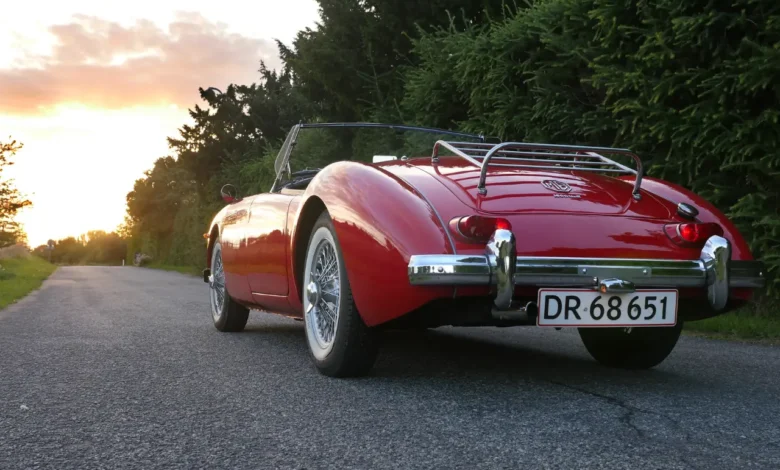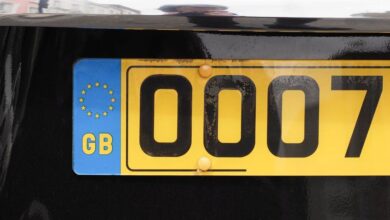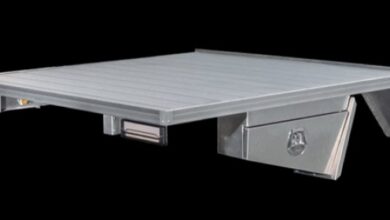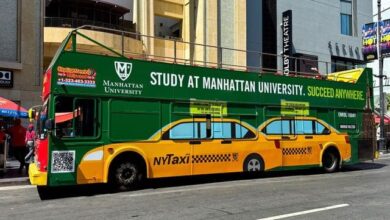How Classic Cars Are Making a Comeback in the Electric Era

Classic cars are making a surprising comeback in today’s world of high-tech, electric-powered vehicles. While modern cars focus on automation and sustainability, vintage automobiles continue to captivate enthusiasts with their timeless charm and craftsmanship.
The rise of electric vehicle (EV) technology has transformed the auto industry, offering eco-friendly alternatives to traditional gas-powered engines. However, instead of fading into history, classic cars are evolving. Many owners now embrace electric conversions, blending old-school aesthetics with modern performance.
This shift is redefining what it means to own a classic car. Enthusiasts are finding ways to preserve history while adapting to the future, ensuring these iconic vehicles remain on the road for years to come.
1. The Growing Appeal of Classic Cars in a Tech-Driven World
In an era of sleek electric vehicles and self-driving technology, classic cars offer something modern machines can’t—soul. Their timeless design, handcrafted details, and raw driving experience create a deep connection that today’s mass-produced cars often lack. Nostalgia plays a major role, as many enthusiasts long for the golden era of automobiles when cars were built to be works of art.
Beyond sentiment, classic cars hold cultural significance. They tell stories of innovation, craftsmanship, and style that defined past generations. Unlike today’s disposable tech, these machines have character, with each one carrying a unique history.
Digital platforms and social media have fueled this revival, bringing collectors, restorers, and fans together worldwide. Online marketplaces make rare models easier to find, while influencers and content creators showcase restorations and electric conversions. This blend of tradition and modern accessibility is keeping classic cars alive and more appreciated than ever before.
2. The Role of Electric Conversions in Classic Car Revival
EV technology is reshaping the future of classic cars, giving them a second life on modern roads. Instead of being retired to garages or museums, vintage models are now being upgraded with electric powertrains, blending timeless aesthetics with cutting-edge performance.
One of the biggest benefits of electric conversions is sustainability. By replacing aging gas engines with clean, efficient electric motors, classic car owners reduce emissions without sacrificing style. Plus, EV-powered classics offer smoother acceleration, less maintenance, and a whisper-quiet ride—without the hassle of oil changes or overheating issues.
Some standout conversions include the Jaguar E-Type Zero, famously driven by Prince Harry on his wedding day, and electric Porsche 911s, which maintain their iconic handling while gaining instant torque. These transformations prove that classic cars don’t have to fade into history—they can evolve, keeping their charm while embracing a greener, more efficient future.
3. Classic Cars with Modern Enhancements: Best of Both Worlds
Blending vintage design with modern technology is a growing trend among classic car enthusiasts. While the timeless appeal of classic cars remains strong, many owners are opting for upgrades that enhance safety, comfort, and performance without compromising the vehicle’s original charm.
Restored classics now feature advanced interiors, including touchscreen infotainment systems, high-quality upholstery, and climate control. Safety improvements such as anti-lock brakes, power steering, and adaptive suspension make these cars more practical for daily driving. Meanwhile, modern drivetrains improve reliability, fuel efficiency, and overall performance.
A great example of this fusion is the convertible G Wagon. These restored models retain their rugged, vintage aesthetics while offering modern engine performance, refined interiors, and upgraded driving dynamics. This approach allows classic car lovers to enjoy the best of both worlds—old-school charm with the convenience and efficiency of contemporary technology.
4. The Market Demand for Classic and Electric Hybrid Vehicles
The demand for classic cars, especially those with modern enhancements, is on the rise. Collectors and investors see these vehicles as appreciating assets, fueling a growing market for high-quality restorations. With the added appeal of electric conversions, even younger buyers are showing interest in owning a piece of automotive history.
Boutique car builders specializing in classic electric conversions are capitalizing on this trend. Companies are transforming vintage models—like old Land Rovers, Mustangs, and Porsches—into high-performance, eco-friendly machines. These vehicles maintain their nostalgic charm while benefiting from modern EV technology.
Regulatory changes and stricter emissions laws are also shaping this shift. Many cities worldwide are implementing low-emission zones, making electric classic cars a practical alternative. As sustainability becomes a key focus in the automotive industry, the fusion of classic design and electric innovation continues to attract enthusiasts looking for both style and environmental consciousness.
Conclusion
Classic cars are making a strong comeback in the EV era, proving that nostalgia and innovation can go hand in hand. Enthusiasts no longer have to choose between tradition and progress—they can preserve automotive history while benefiting from modern technology.
With electric conversions, advanced restorations, and hybrid designs, classic cars are evolving to meet today’s demands. This shift not only ensures their longevity but also makes them more sustainable and practical for daily use.
As technology advances, the future of classic car restoration looks promising. Expect to see more vintage icons reimagined with electric power, keeping their timeless appeal alive for generations to come.



